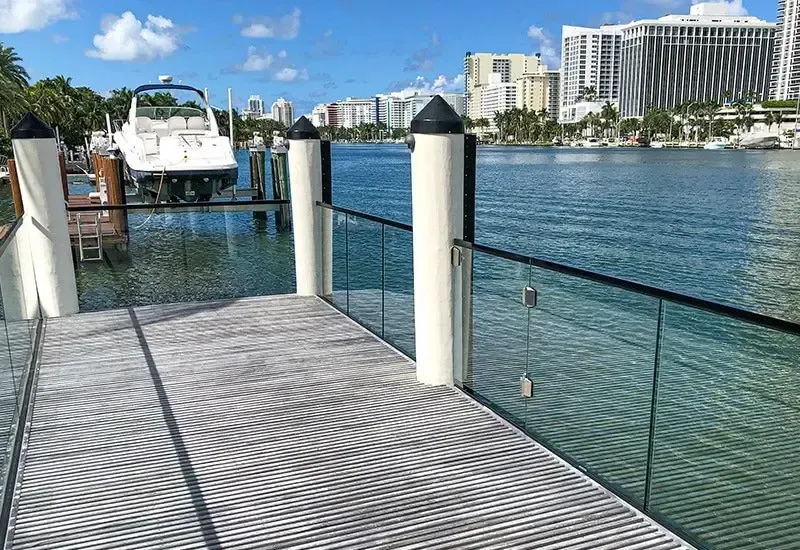NEWS
NEWS
|
|
|
|
|

Pool Fence Code Requirements
Building codes and legislation continue to mandate pool fences as a security measure to prevent young children from gaining access to the pool unsupervised, pushing more and more pool owners into taking precautions to protect their children and community.
Fences installed around swimming pools must meet local building codes. The rules apply to both public and residential pools, in-ground and above-ground pools, as well as hot tubs and spas.
Pool Fence Height: In most areas, the height of the fence must be either four or five feet above finished ground level, depending on the pool codes of the governing municipality.
Gap Under Fence: The U.S. Consumer Products Safety commission recommends a maximum of four inches between the glass and a solid ground surface such as wood, tile, or concrete. For mutable surfaces such as grass or gravel, the maximum recommended distance is two inches.
Gap Between Panels: The CPSC also specifies no more than four inches between vertical panels, so that children and pets can’t get stuck between panels.
Gates: Pool gates must be self-closing and latching, with locks installed at a specified height, out of reach of small children.
Safety Barrier Guidelines for Residential Pools – CPSC.gov
Aquaview glass pool fences meet all of these building code requirements. Added safety benefits include unobstructed views to monitor children, soft-close hinges, and climb-resistant panels with smooth polished edges. Before ordering a pool fence, make sure to check your local building code regulations.


Pool Fence Code Requirements
Building codes and legislation continue to mandate pool fences as a security measure to prevent young children from gaining access to the pool unsupervised, pushing more and more pool owners into taking precautions to protect their children and community.
Fences installed around swimming pools must meet local building codes. The rules apply to both public and residential pools, in-ground and above-ground pools, as well as hot tubs and spas.
Pool Fence Height: In most areas, the height of the fence must be either four or five feet above finished ground level, depending on the pool codes of the governing municipality.
Gap Under Fence: The U.S. Consumer Products Safety commission recommends a maximum of four inches between the glass and a solid ground surface such as wood, tile, or concrete. For mutable surfaces such as grass or gravel, the maximum recommended distance is two inches.
Gap Between Panels: The CPSC also specifies no more than four inches between vertical panels, so that children and pets can’t get stuck between panels.
Gates: Pool gates must be self-closing and latching, with locks installed at a specified height, out of reach of small children.
Safety Barrier Guidelines for Residential Pools – CPSC.gov
Aquaview glass pool fences meet all of these building code requirements. Added safety benefits include unobstructed views to monitor children, soft-close hinges, and climb-resistant panels with smooth polished edges. Before ordering a pool fence, make sure to check your local building code regulations.


